- | 9:00 am
5 prototype homes show that houses can be ‘sustainable and attainable’
Architects explore new ways human needs and preferences can influence residential design.
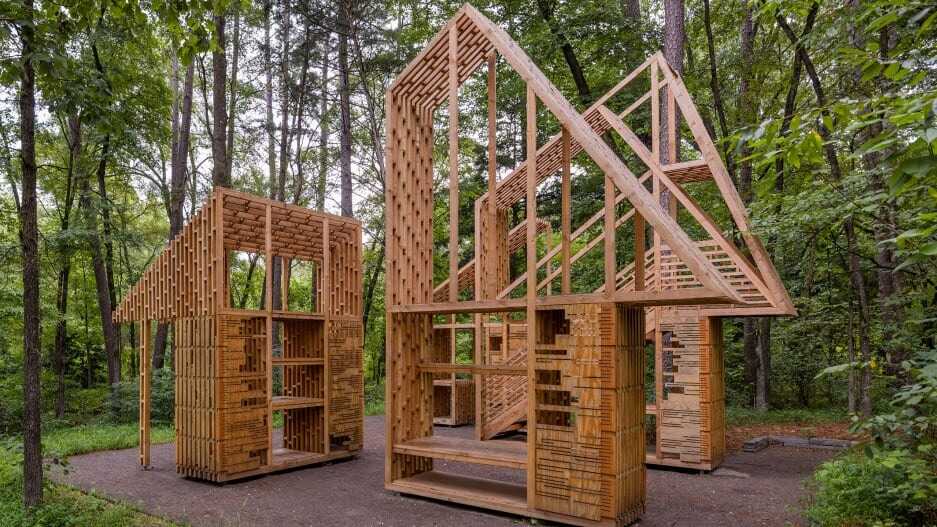
Housing is both an intimate part of the human experience and also a consumer product. A new exhibition at the Crystal Bridges Museum of American Art in Bentonville, Arkansas, features five full-scale prototype homes that try to square those two seemingly opposing realities.

“Architecture at Home,” which runs through November 7, offers new ideas for how houses can be built to reflect the needs of people living in them while also actually being buildable. According to curator Dylan Turk, the prototypes show how housing can be both sustainable and attainable.The prototypes are designed by five teams of architects practicing across the Americas, including studioSumo in New York and Los Angeles, Levenbetts in New York, Mutuo in Los Angeles, Pérez Palacios Arquitectos Asociados in Mexico City, and studio:indigenous in Wisconsin.
“I essentially gave them a brief: You a have a family of three, they live in Bentonville, Arkansas, and their house can’t cost more than $200,000,” Turk says.
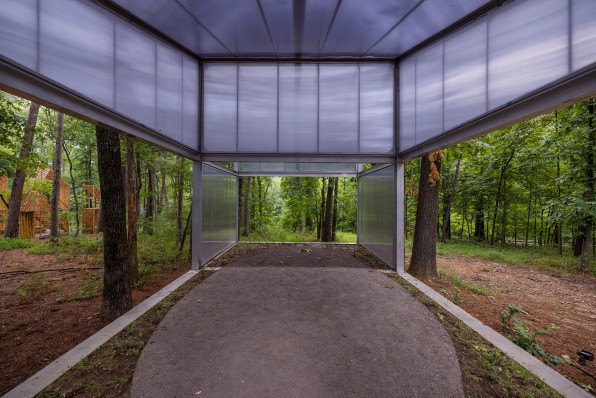
The designs created by each team have been fully realized in the form of plans that Turk says could be used to build today (and those plans are part of the exhibition). On the museum’s grounds, though, the prototypes aren’t exactly model homes, but rather abstract versions that highlight new approaches to home design.The exhibit features concepts that the architects envision changing both the shape and accessibility of housing in Northwest Arkansas and beyond. It’s a way to delve into questions—not just about how much a house costs to build but what people want from the spaces where they live.
“What we’re doing is not giving solutions for the exact model of a house you would build,” Turk says, “but a new way of talking about the problem, a new way of approaching changing how we live, that starts from the human side with a human-focused design, rather from a number, data-driven side.”
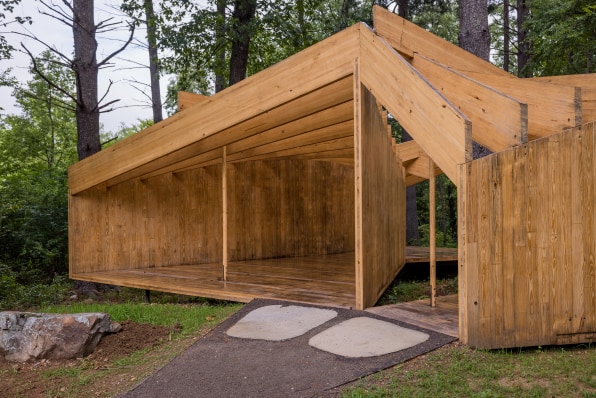
One of the prototypes, by Levenbetts, is a timber house built around a giant pine tree. Mass timber rafters form the cascading pitch of the home’s unfinished roof and blend seamlessly into the wooden walls and floors.Exploring the process and barriers to timber construction even in a timber-rich state like Arkansas, the prototype is embedded with details about the sourcing of the trees used to make the lumber, the facilities where it was processed, and the rules regulating timber construction.
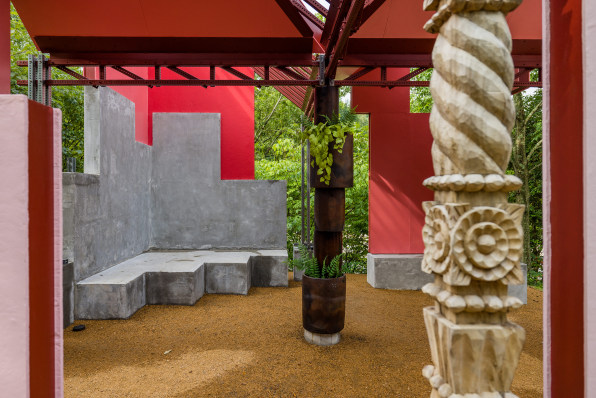
Another, by Mutuo, is a grid of concrete columns topped with pink steel and a roofline that would direct rainfall into internal gardens. The concrete foundations and steel pillars extend beyond the edge of the home and are meant to represent the complex and inflexible planning, financial, and regulatory systems that historically have prevented marginalized communities from attaining housing.
“We want guests to walk through this rigid system,” Turk says. “It shows that if you can’t fit into this rigid system you are iced out of the housing market.”
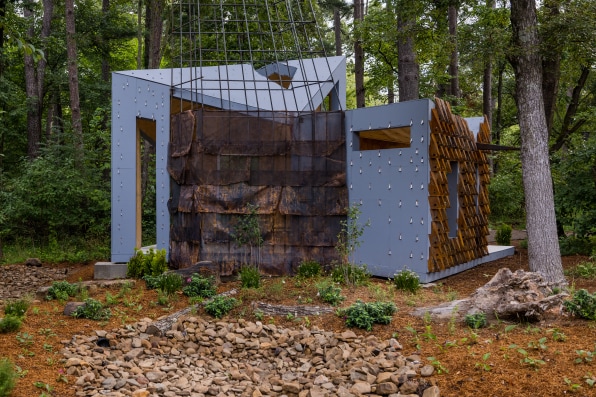
The prototype by studio:indigenous, founded by Chris Cornelius, a member of the Oneida Nation, critiques the typical Department of Housing and Urban Development homes that make up much of the housing stock on Native American reservations across the U.S. HUD housing often includes manufactured homes that offer limited daylight or access to the outdoors.“It picks every element that was missing in his HUD house and makes a house out of all the missing pieces—so a hearth, a front porch, all of these things, to showcase this is how he as an Indigenous person thinks about the concept of home, and literally none of them exist in a HUD house,” Turk says.
The museum already has a collection of notable architectural gems on its grounds, including the Fly’s Eye Dome designed by R. Buckminster Fuller and a Usonian house from Frank Lloyd Wright’s experiments in prefabrication.
Turk is hopeful that these new prototypes will follow in the footsteps of those experimental designs, posing questions about the future of housing but also giving people a firsthand experience of what new forms of residential design can be.
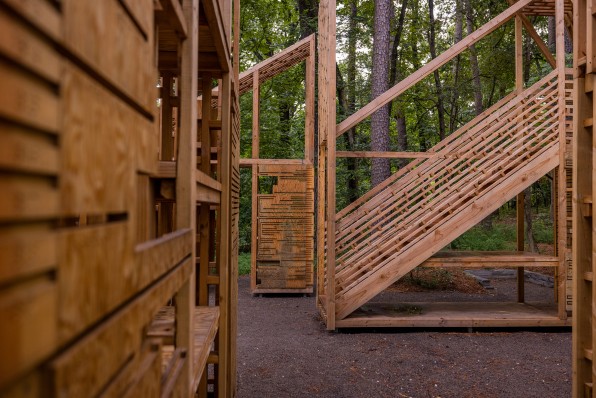
“The number-one thing architecture should do to you is do its job, and it doesn’t have to talk about it. You feel it. It throws light in a certain way, it moves you through a landscape, it asks you to pause. This is what good architecture does,” Turk says. “That’s where the prototype is critical, because you get to walk through it, you get to feel the space and understand it.”





































